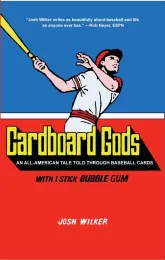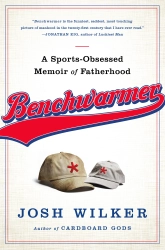
Dave Campbell
December 15, 2010What Is the Meaning of the 1978 Atlanta Braves? (card 15 of 25)
(continued from Rick Camp)
Dave Campbell had a good year in 1977. In fact, on the back of this card, Dave Campbell is referred to as an “artist”: “Dave was the Braves’ top bullpen artist of 1977.” All things must pass. If Dave Campbell was called upon at the start of 1978 to continue being the team’s primary reliever, he didn’t last very long in the role and managed to record just one save the entire season. With the season underway, the Braves traded for Gene Garber, who would be one of the few bright spots for the 1978 team. Garber saved 22 games in all, and finished a team-high 36 games. Campbell was right behind him in the latter category, with 35 games finished, and it stands to reason that many of those 35 games finished were lost causes. Dave Campbell, former artist, had been demoted to mopup man. He didn’t pitch in many crucial situations, but because the Braves’ season had fewer such situations than a good or even a mediocre team, Campbell got plenty of chances to pitch, logging the second-most innings (after Garber) of any of the pitchers used strictly in relief. In the last game of the 1978 Braves, an extra-inning slugfest caused the team to cycle through most of their other bullpen options, including Gene Garber, and Dave Campbell entered the action in the thirteenth inning with the score tied.
Whether or not this was a crucial situation is a matter open to some debate, as suggested by a disquieting development in the recounting of the action at baseball-reference.com. Right up until the moment Dave Campbell enters the game, the play-by-play follows the usual baseball-reference.com practice of describing in suitable detail the outcome of every at-bat, whether the batter reaches base safely or not. For example, the outcome of the at-bat immediately prior to Campbell’s entry, is narrated thusly: “Line Drive Double Play: SS-2B.” All seems to be continuing normally in the bottom of the inning for Dave Campbell, whose strikeout of star slugger George Foster is duly noted in the play-by-play, but then Vic Correll comes to the plate—in a spot in the lineup originally manned by Johnny Bench, who earlier in the proceedings called it a season and hit the showers—and the watchfull consciousness usually involved in major league action begins to blur. The only details of the clash between Dave Campbell and his former teammate Correll are these: “Batted Ball: Unknown.”
Dave Campbell seems to have been thrown off his game by the occurrence—he walked the next two batters and then hit a third with a pitch, loading the bases. He managed to escape the inning and prolong the season of the 1978 Atlanta Braves just a little longer, but we can’t really know how he did this. Once again, this time with Rick Auerbach up (Auerbach manning the third base position in place of Pete Rose, who like fellow legend Johnny Bench had exited the increasingly pointless action some innings earlier), the outcome of an at-bat is noted as “Batted Ball: Unknown.” Strangely, the efforts of Dan Dumoulin, the Reds pitcher who faced the Braves in the top of the fourteenth, are not similarly obscured, the play-by-play detailing how he danced around a Jerry Royster double by inducing a fly out to center and two groundballs back to the pitcher. But then when Dave Campbell retook the mound in the bottom of the fourteenth, the mysterious indifference returned, and this time it seemed to knock Dave Campbell completely off his axis. I try to envision the actual events of Dave Collins’ fourteenth inning at-bat against Dave Campbell, described in the play-by-play as “Batted Ball: Unknown” and all I can see is a ball looping up into the air above the fielders’ heads and then dissolving like a grayish pill in dark water. Eventually, another baseball is produced and given to Dave Campbell, but he has begun to sense what we all suspect eventually. The universe is infinite, this earth a speck that will one day dissolve, taking with it everything: bat, ball, gloves, sod, scoresheets, pencils, voices, memories, wins, losses, saves. Who can blame Dave Campbell for coming unglued? He gave up a single to Ron Oester and then, with the last pitch he ever threw in the majors, surrendered a George Foster home run.
***
(Love versus Hate update: Dave Campbell’s back-of-the-card “Play Ball” result has been added to the ongoing contest.)






Josh: No particular comment. I just didn’t want you to feel as though some of your insightful blog meanderings were ending up in the same place as those balls hit against Campbell.
Did a news search but could not solve any of those unknown plays. But I did find out that individual races were won, and records were set in that game. Rose leaving the game was key–replaced in the 8th in a 5-run game, he would have ended up with 4 more at bats, which would have given him a chance to get the 2 hits he needed to get 200.
Atlanta’s putout totals at BRef add up to the right number of outs recorded: 41. Would going through the known PBP give you some players with extra putouts and/or assists?
Retrosheet has the mystery plays listed as “out on an unknown play”. They also have 41 PO, but the players’ totals add up to 38 and there is a footnote stating that 3 outs are missing.
Larry Whisenton (RF) has 3 putouts and 3 assists in BRef but 0 and 0 in Retrosheet. 3 flyouts to RF is possible, I suppose, but I’m positive those 3 assists are an error (pun might be intended).
So what happened? Was the only scorecard of that game unreadable in those spots? Did the scorer miss the plays?
Last pitch a home run? Ouch. Though, it’s probably better than going on on a grounder or something insignificant.
I counted up his putouts/assists from his other games in ’78 (fortunately he only played 4 games in the field) and they add up to his totals for the season (5 PO, 0 A). So the 3 PO and 3 A in that game were just thrown in there. The PO make that column correct because of the 3 missing plays, but the 3 phantom assists just throw everything off. His “advanced fielding” on BR also shows the 3 assists–crediting them all to outs made at 1B. But yeah I don’t think those 3 missing plays were GORFs…
Funny, one of the boxscores of this game I found on a news search had a big white spot covering a huge part of it. The mystery continues…
Ha, and as I posted that, Lucy went into her speech on “how can somebody be great if he’s never had a picture on a bubblegum card?”
Dave Campbell > Beethoven
Josh, Congragulations for p. 32 of the latest Sports Illustrated – “Card Sharp.” !
Thanks! I haven’t seen the issue yet.
Going, going, a way back
And She is Gone!
The Ball
The Game
The Career, reduced to the unknown result
Time to go, that’s all she had to give Captain
All Gone
Merry Christmas
I get my cards on this site http://pearsonsportscards.com/
Thru Retrosheet, I enjoy seeing how guys break in and how they leave the game….for example, I think Frank Robinson’s last game in the majors as a player, he was pinch-run for by Alfredo Griffin, a future Rookie of the Year (three years later!) for the Blue Jays, an honor he shared with John Castillo of the Twins. Another interesting tidbit: Robby had more than 2,900 base hits in his career, could have penciled his own name as manager of the Indians but did not do it very often that final year when he played.
I am 13 years late to the dave campbell party!
I had to look up the game and see if in 13 years BBref has figured out UNKNOWN!
and unlike our leaders not able to figure out inflation for 13 years, BBRef kept at it and figure it out
Vic Correl lofted a fly to left! : )
there are no more unknowns